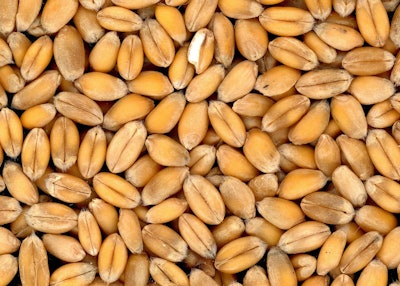
The U.S. Department of Agriculture's June World Agricultural Supply and Demand Estimates (WASDE) report forecasts a marginal increase in global wheat production for the 2025/26 marketing year, coupled with higher consumption and trade figures. However, global ending stocks are projected to decline, potentially tightening supplies in the coming year.
According to the report released on June 12, 2025, world wheat production is estimated at 808.59 million metric tons, a slight increase from the May projection of 808.52 million tons. This modest growth is primarily attributed to improved production outlooks in the European Union and India, which more than offset reductions in other regions.
The EU's wheat production forecast has been raised to 136.6 million tons, reflecting improved conditions in Spain compared to the previous year. India's production estimate has been increased to a record 117.5 million tons, based on the government's Third Advanced Estimate.
Global wheat consumption is projected to rise to 809.80 million tons, up 1.8 million from the previous month's estimate. This increase is mainly due to higher food, seed, and industrial use in Nigeria, Sudan, and India. The uptick in consumption outpaces the production increase, contributing to the projected decline in ending stocks.
World wheat trade is forecast at 214.33 million tons, an increase of 1.3 million tons from the May projection. This growth is primarily driven by higher export expectations for the United States and the European Union.
U.S. wheat exports for the 2025/26 marketing year are now projected at 22.45 million tons, up from 21.77 million tons in the May report. This increase is attributed to strong early 2025/26 sales, especially for Hard Red Winter wheat.
Despite the slight increase in global production, world ending stocks for 2025/26 are forecast to decrease to 262.76 million tons, down 3.0 million tons from the previous month's estimate. This reduction is mainly due to lower stock projections for Russia, the United States, Iraq, and Turkey.
The USDA's report indicates that the global wheat market may face tighter supplies in the coming year, as consumption growth outpaces production increases. This situation could potentially impact wheat prices and food security concerns in import-dependent regions.
For the United States, the outlook includes slightly larger supplies, unchanged domestic use, higher exports, and lower ending stocks compared to the May projections. U.S. wheat production is estimated at 52.28 million tons, with the average farm price projected at $5.40 per bushel, up $0.10 from the previous month's forecast.
The June WASDE report provides crucial insights for industry stakeholders, policymakers, and market analysts as they navigate the evolving global wheat landscape. As the 2025/26 marketing year progresses, close monitoring of weather conditions, trade dynamics, and consumption patterns will be essential for understanding the full impact of these projections on the world wheat market.

















